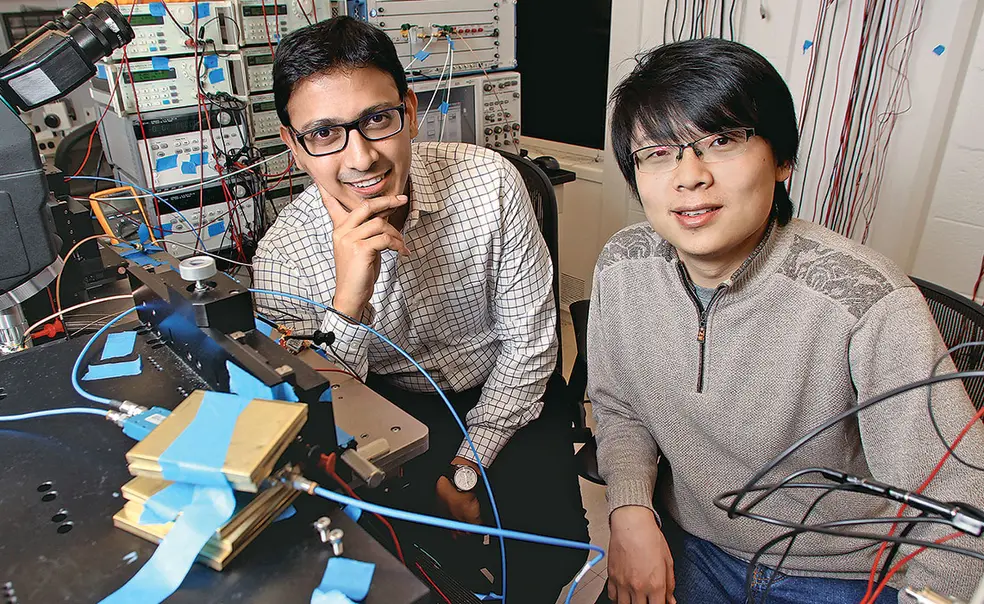Electrical Engineering: Unused Territory in the Electromagnetic Spectrum Is Ripe for Harvest
Just like an unexplored region of the Earth, there’s a gap in the electromagnetic spectrum. Between the microwaves — used for wireless communication — and the infrared light on the edge of the visible range, exists a band of waves between 0.3 and 10 terahertz (300–10,000 GHz) that has long stymied scientists’ attempts to exploit it. “This terahertz gap is one of the least explored parts of the range,” says Kaushik Sengupta, assistant professor of electrical engineering. “It’s like the wild, wild West in the electromagnetic spectrum.”
In a pair of papers recently published in the IEEE Journal of Solid-State Circuits, Sengupta and grad student Xue Wu trailblaze a new technique for measuring this range, which could potentially open it to new breakthroughs in electronics, particularly in cellphones. Their major insight was to tackle this area not from the top of the range down using light-based technology like lasers, but from the bottom up, using silicon technology more commonly used for communications.
Terahertz waves could have amazing technological applications. With one terahertz 1,000 times larger than a gigahertz, these waves could wirelessly convey mountains of data across high bandwidths at lightning speeds. The waves also have the ability to penetrate opaque surfaces — for example, scanning luggage — at much higher resolutions than are currently possible. And many biological chemicals also have spectroscopic signatures at this range, allowing for easier identification of chemicals in biotechnology applications.The bulky array of gear currently used to measure terahertz waves, however, is clunky and expensive, making it impractical outside of a lab. The technique developed by Sengupta and his colleagues takes low-cost silicon and amplifies its power with billions of nano-sized transistors. Instead of measuring the terahertz waves, the technology measures spectroscopic signatures of the molecules vibrating around them, extrapolating from the molecules the frequency and characteristics of the terahertz wave.
“Imagine you are looking into a soundproof room where someone is talking and you [can’t hear], but there is a plant whose leaves are vibrating from the sound,” explains Sengupta. “By taking these vibrations, and measuring them closely, you could re-create the vibrations of the person’s speech.” In the same way, the billions of transistors can extrapolate the vibrations of the terahertz waves, eliminating the need for the bulky spectroscopic equipment.
So far, Sengupta and fellow researchers have measured terahertz waves on the lower end of the terahertz gap, but theoretically there is no limit to how far up the spectrum the new technique can go. “We really have to reinvent the way we think about terahertz research,” he says. “Instead of working to create the best device, we need to take a step back and think how we can apply a systems framework to leverage the incredible abilities of silicon” — doing that can help open up the heretofore unexplored part of the electromagnetic spectrum to new pioneers. “Just a few years ago, it was unthinkable we could have communications at 30 to 50 gigahertz — and this is more than 10 times that,” says Sengupta. Advancements in this technology, he says, could enable incredibly fast rates of communication in our cellphones. “We are expanding into the wild, wild West, and we will discover what lies out there.”













No responses yet